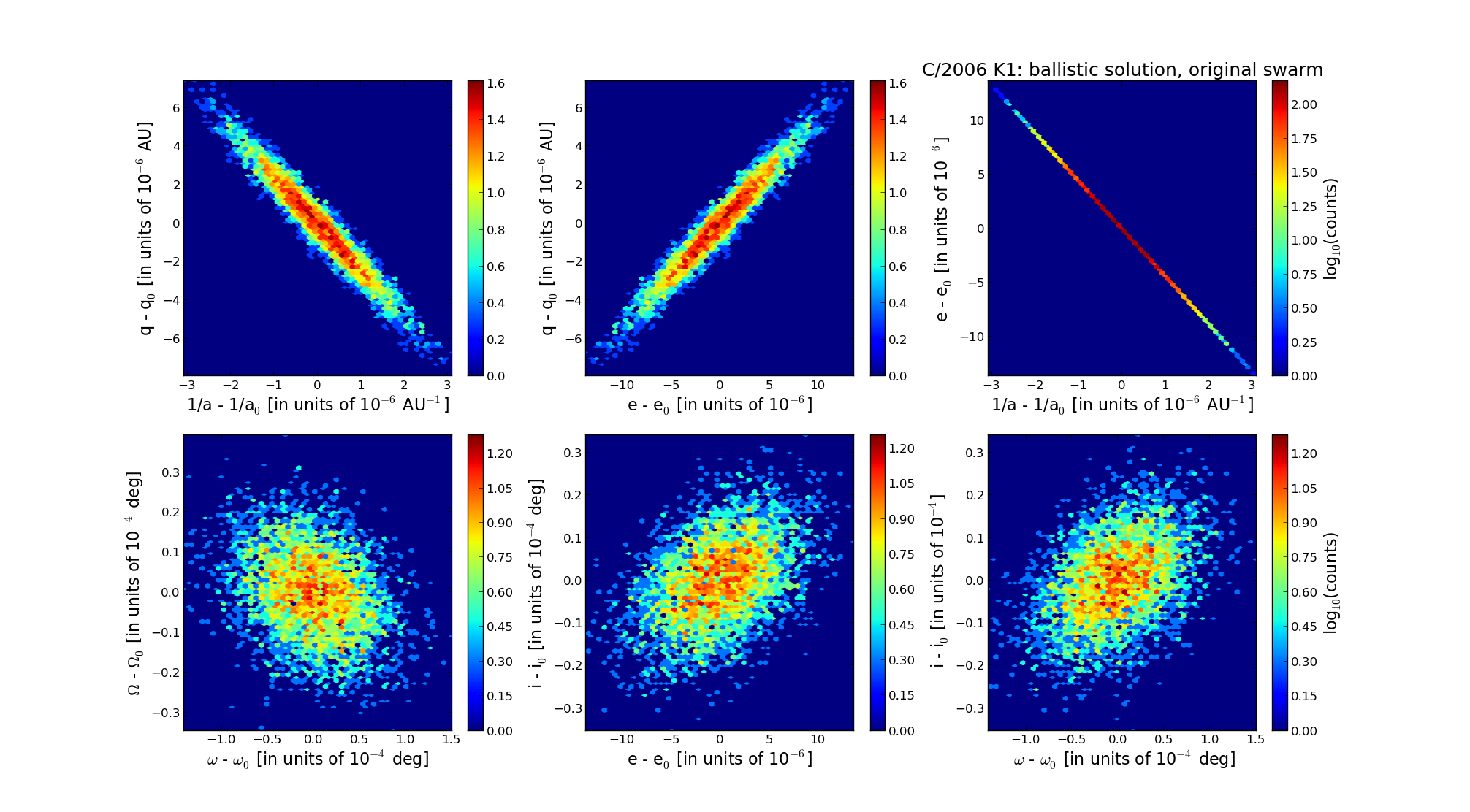| Solar System Dynamics & Planetology Group |
 |
C/2006 K1 McNaught |  |
| Solar System Dynamics & Planetology Group |
 |
C/2006 K1 McNaught |  |
| number of observations | 417 |
| number of residuals | 829 |
| data interval | 2006 May 17 — 2009 Feb. 28 |
| rms [arcsec] | 0.47 |
| orbit quality class | 1a+ |
| Epoch (TT) | 20070808.0 | = JD 2454320.5 |
| time of perihelion passage (TT) | 20070720.550991 | ± 0.000347 |
| perihelion distance | 4.42551584 | ± 0.00000227 |
| eccentricity | 1.00147580 | ± 0.00000414 |
| argument of perihelion [deg] | 296.442241 | ± 0.000042 |
| longitude of the ascending node [deg] | 72.114889 | ± 0.000010 |
| inclination [deg] | 53.876951 | ± 0.000009 |
| inverse semimajor axis [10-6 au-1] | -333.47 | ± 0.93 |

| Epoch (TT) | 17030404 | |
| time of perihelion passage (TT) | 20070720.112692 | ± 0.000348 |
| perihelion distance | 4.42388653 | ± 0.00000230 |
| eccentricity | 0.99992817 | ± 0.00000410 |
| argument of perihelion [deg] | 296.473838 | ± 0.000042 |
| longitude of the ascending node [deg] | 72.153187 | ± 0.000010 |
| inclination [deg] | 53.870510 | ± 0.000009 |
| inverse semimajor axis [10-6 au-1] | 16.24 | ± 0.93 |
| Epoch (TT) | 23070905 | |
| time of perihelion passage (TT) | 20070720.594029 | ± 0.000339 |
| perihelion distance | 4.42802761 | ± 0.00000227 |
| eccentricity | 1.00156044 | ± 0.00000410 |
| argument of perihelion [deg] | 296.450187 | ± 0.000042 |
| longitude of the ascending node [deg] | 72.134583 | ± 0.000010 |
| inclination [deg] | 53.846964 | ± 0.000009 |
| inverse semimajor axis [10-6 au-1] | -352.40 | ± 0.93 |